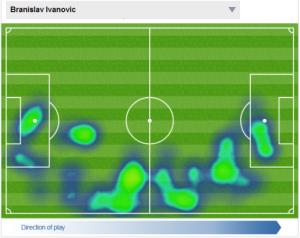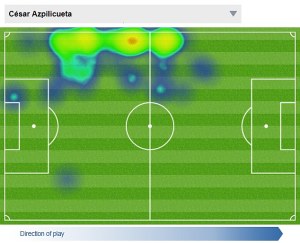Gone is the day of a deep lying 4-4-2, the likes of David Beckham and Ryan Giggs on the wings at Old Trafford flying down to the by line and whipping in crosses have come and gone, nowadays ‘inverted wingers’ are the norm in most squads nowadays, but why is this, and may classic wide-men applied to a modern game?
Smaller clubs have figured out how to defend against dominant teams, the transfer fees of players such as Luis Suarez, Gareth Bale, Alexis Sanchez and Angel Di Maria are testament to how bigger clubs feel the need to overcome compact defences by bringing in marquee players, ones who can turn the key in big games. This is mainly due to the difficulty of defending against a left-footed player who plays on the right or vice versa, the talismans of the past 5 years, Cristiano Ronaldo and Lionel Messi hallmark how effective the ‘inverted winger’ can be, especially when fuelled by a hard-working midfield and attack-minded fullbacks.
Chelsea manager Jose Mourinho, a specialist in creating an effective but flexible playing style has revolutionised Eden Hazard’s game style. Hazard arrived from Lille after a dominant season in Ligue 1 as a #10 (20 Goals and 16 Assists), however this season has seen Mourinho finally assemble his desired squad of players, he has sacrificed the creativity and flair in the middle of the park and utilised the Belgian on the left of midfield.
This was effective for two reasons:
- The creativity of Cesc Fabregas in the middle of the park, which provided service not only to Hazard but also offered a more direct approach through the centre that would be lost without a traditional #10.
- The staggered stability of the wings, whilst Ivanovic provided another season of attacking ability (38 chances created), Willian justified the sale of Juan Mata on the right by clocking up the km’s and defending the flank tirelessly, Azpilicueta who played behind Hazard for most of the season proved to be key in his success, often sitting back and allowing Hazard freedom on the left hand side.
So where does the out-and-out winger sit in today’s game? One may argue that they are making a comeback, mid-table Premier League teams such as Leicester City who have utilised a 3 man defence flanked by Jeffrey Schlu[p and Marc Albrighton or Tony Pulis’ hard-working West Bromwich Albion are examples of how a structured system can yield results, crossing from deep areas gives managers a certainty in some regard, however whilst this may prove effective against other like-minded teams, this does not seem a viable tactic for clubs with ambitions for European success, as this style of play becomes predictable against stronger opposition.
FC Barcelona are the pinnacle of how a modern 4-3-3 should be played, inverted wingers Messi and Neymar constantly cause problems for both Spanish and European defences, however it is the adaptability of their game which means they can succeed on a regular basis. The width provided by Alba and Alves means fullbacks and opposing wide midfielders are taken out of position when focused on negating the affect of Barcelona’s wingers, whilst the vast range of passing executed by Rakitic and Iniesta can easily break down structured and deep lying defensive lines.
The inverted winger therefore must be exercised carefully, teams are slowly figuring out how to defend against it, as seen by Juventus’ utilisation of a tight midfield against Real Madrid, just as teams figured out how to defend against out-and-out wingers effectively (the offside trap).

